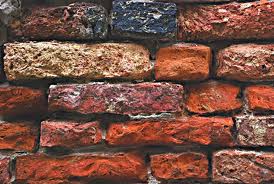Brick: Difference between revisions
Jump to navigation
Jump to search
Created page with "right|thumb|300 px|a brick wall in veniceBricks where the first material used to pave the early walkways of Venice. The first Streets where paved with ..." |
No edit summary |
||
| (One intermediate revision by the same user not shown) | |||
| Line 1: | Line 1: | ||
[[File:Brick.jpg|right|thumb|300 px| | [[File:Brick.jpg|right|thumb|300 px|A brick wall in Venice]] Bricks where the first material used to pave the early walkways of Venice. The first [[streets]] where paved with Venetian bricks in 1264 and were refereed to as ''[[salizada]]''.<ref>G. Tassini, ''Curiosita Venezia'', (6th edition, 1931)</ref> Bricks don't simply serve as masonry in Venice but also serve as a base for all construction measurements. When constructing a [[canal wall]], [[bridge]], or any other structure, dimensions are based on the size of a standard brick. | ||
== Dimensions == | == Dimensions == | ||
Latest revision as of 16:24, 16 June 2014

Bricks where the first material used to pave the early walkways of Venice. The first streets where paved with Venetian bricks in 1264 and were refereed to as salizada.[1] Bricks don't simply serve as masonry in Venice but also serve as a base for all construction measurements. When constructing a canal wall, bridge, or any other structure, dimensions are based on the size of a standard brick.
Dimensions
| Length(cm) | Width (cm) | Height (cm) | |
|---|---|---|---|
| Traditional Brick | |||
| Current Brick | 26 | 12.5 | 5.5 |
See Also
References
- ↑ G. Tassini, Curiosita Venezia, (6th edition, 1931)
Bibliography
Ing. Michele Regini, Dec 2011 Ing. Lorenzo Bottazzo, Dec 2011